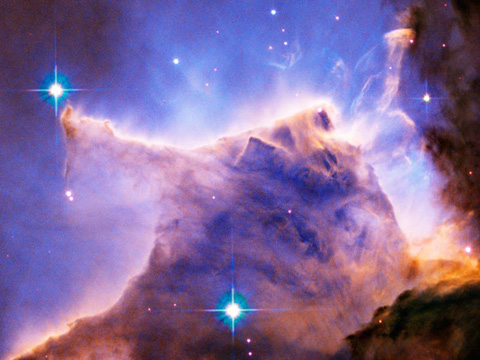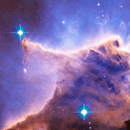Space Dust: It's Alive and It's ... Us?
Wired
August 17, 2007
That life should be carbon-based is a pretty dated assumption. These days, the zeitgeist is all about sustained organization and patterns of energy flow. Really, should aliens be organic just because we are?
So cast aside the blinders of earth-based life, and open your mind to this:
... an international team has discovered that under the right conditions, particles of inorganic dust can become organised into helical structures. These structures can then interact with each other in ways that are usually associated with organic compounds and life itself.
The right conditions are found in a plasma -- that "fourth state of matter beyond solid, liquid and gas, in which electrons are torn from atoms leaving behind a miasma of charged particles."
In a computer model of inorganic particles in plasma, researchers from the Russian Academy of Science, the University of Sydney and the Max-Planck Institute for Extraterrestrial Physics watched plasma-state inorganic dust organize itself, twisting into strands that look and act a bit like DNA:
They can, for instance, divide, or bifurcate, to form two copies of the original structure. These new structures can also interact to induce changes in their neighbours and they can even evolve into yet more structures as less stable ones break down, leaving behind only the fittest structures in the plasma. [...]
"These complex, self-organized plasma structures exhibit all the necessary properties to qualify them as candidates for inorganic living matter," says Tsytovich, "they are autonomous, they reproduce and they evolve."
Where are plasma-friendly conditions found? In space ... and on earth, where lightning strikes. It's a plausible mechanism for the origin of terrestrial life.





 Share your thoughts in the Forum
Share your thoughts in the Forum
